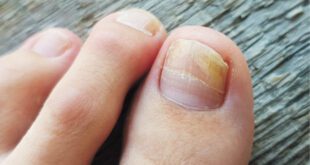By Ashley Cauthen, MD
 We all know some men tend to neglect their health. This is so prevalent that the month of June is devoted to Men’s Health awareness. Maintaining good overall health involves taking care of every aspect of your body, including your skin. While often overlooked, men’s dermatological health is essential for both appearance and overall well-being. In this months newsletter, we will focus on dermatologic conditions that more commonly afflict men.
We all know some men tend to neglect their health. This is so prevalent that the month of June is devoted to Men’s Health awareness. Maintaining good overall health involves taking care of every aspect of your body, including your skin. While often overlooked, men’s dermatological health is essential for both appearance and overall well-being. In this months newsletter, we will focus on dermatologic conditions that more commonly afflict men.
Some of the more common skin ailments men deal with include acne, seborrheic dermatitis, fungal infections, razor bumps, male pattern baldness, scrotal dermatitis, and skin cancer.
1. Acne: Acne is a common skin condition that can affect men of all ages. It occurs when hair follicles become clogged with oil and dead skin cells, leading to the formation of pimples, blackheads, and whiteheads. This occurs most commonly in teen years when testosterone is surging and good hygiene practices haven’t yet been implemented. It has also become more prevalent in middle aged men as testosterone replacement therapy has become popular.
2. Seborrheic dermatitis: Seborrheic dermatitis is characterized by red, itchy, and flaky patches on the scalp, face (especially hair bearing areas like eyebrows and beard), ears, and other oily areas of the body. The cause is multifactorial but an overgrowth of a type of yeast called Malassezia is often involved. Men tend to be more prone to this condition due to increased oil production and more facial hair. This condition is also more commonly seen in patients with Parkinson’s disease. Over-the-counter or prescription shampoos containing ketoconazole, selenium sulfide, or pyrithione zinc can help relieve symptoms.
3. Fungal infections: Men are susceptible to various fungal infections such as athlete’s foot (tinea pedis) and jock itch (tinea cruris). These infections thrive in warm and moist environments, making areas like the feet, groin, and armpits prone to infection. Most of the time these can be treated with topical antifungal creams, but more severe cases require oral antifungal treatment. It is important to treat your shoes to prevent reinfection.
4. Razor bumps: Men who shave regularly may experience razor bumps, also known as pseudofolliculitis barbae (PFB). Razor bumps occur when shaved hairs curl back and grow into the skin, leading to inflammation, redness, and small bumps. PFB is more prevalent in men with curly or coarse facial hair. Using a sharp razor, shaving in the direction of hair growth, and applying a soothing aftershave can help prevent this condition.
5. Male pattern baldness: Is a common condition causing hair loss. It is also called androgenetic alopecia and typically starts with a receding hairline and thinning on the crown of the head. This type of hair loss is primarily caused by genetic factors and hormonal changes. While there is no cure for this type of hair loss, there are several treatment options to slow the progression and promote hair growth. The most common medications used include minoxidil (topical and oral) and finasteride. In cases where significant hair loss has occurred, hair transplant surgery may be an option.
6. Scrotal dermatitis: This refers to inflammation and irritation of the skin on the scrotum. It can be caused by various factors such as allergic reactions, fungal or bacterial infections, excessive sweating, or friction from clothing. Proper hygiene and wearing breathable fabrics can help prevent scrotal dermatitis. Sometimes despite these efforts, a prescription strength cream will need to be prescribed to treat this condition.
7. Skin cancer/Sun damage: Overexposure to the sun’s UV rays can lead to premature aging, wrinkles, and an increased risk of skin cancer. While both sexes can certainly be at risk for this, occupational exposure and less consistent sunscreen use, put males at higher risk. Studies have shown that men are more neglectful at having non healing lesions evaluated which leads to skin cancer being diagnosed at a later stage and requiring more invasive treatment modalities.
It’s important to consult with a dermatologic provider for accurate diagnosis and appropriate treatment if you suspect you have any of these skin conditions. We can provide personalized advice and recommend suitable skincare routines or medications to alleviate symptoms.
Call MidState Skin Institute Today!
Jasmine
352-732-7337
Deerwood
352-512-0092
Paddock
352-470-0770
MidState Skin Institute Services:
Medical Dermatology
The science of treating the skin, hair, and nails to relieve or cure skin disorders.
Surgical Dermatology
The practice of dermatology that specializes in surgical procedures & minimally invasive
techniques to treat skin cancer.
Cosmetic Dermatology
The practice of improving the look and health of one’s skin through medical or surgical
procedures, to help patients look and feel
their best.
Aesthetics
Treatment for the skin, hair or body that is meant to enhance the appearance of patients through minimally invasive techniques & personalized topical skin care recommendations.
 Central Florida Health and Wellness Magazine Health and Wellness Articles of the Villages
Central Florida Health and Wellness Magazine Health and Wellness Articles of the Villages



